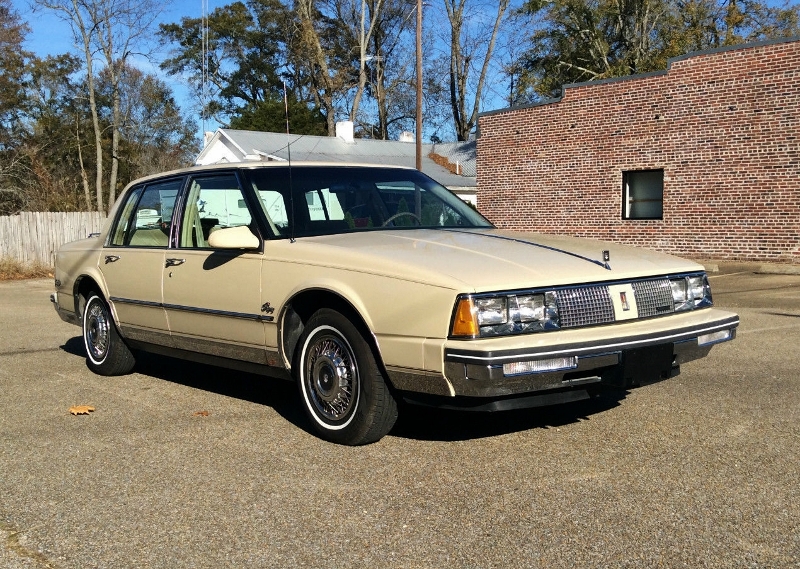
There is a certain website out there that is trying, desperately, incessantly, to bash successful GM cars. Why is anyone’s guess. But despite popularity, despite corresponding sales figures, it doesn’t matter for these guys. Bitter, angry people make for bitter, angry car posts. So in my own way, I’ve been trying to counterpoint these surly rants. Today’s subject is the redesigned 1985 front wheel drive C-body GM cars: De Ville/Fleetwood, Electra, and of course the Oldsmobile Ninety-Eight.
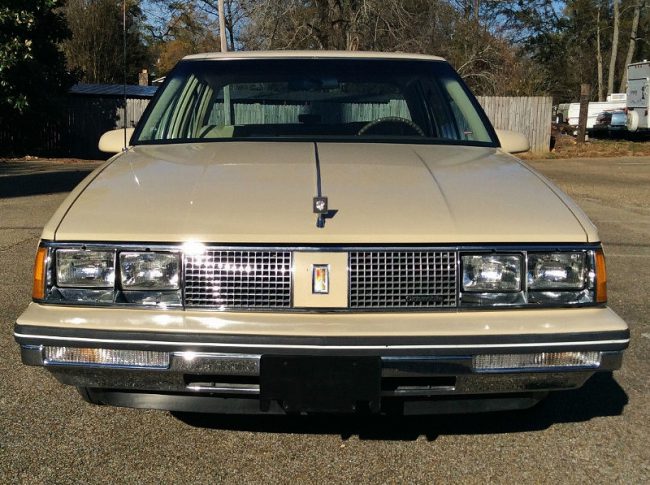
“Oh ho, aha!” some folks may rant: “They were shrunken, stupid, unreliable maaaan! No one bought them!” Big talk from persons who only got brand new cars when they conned them out of their employer. But I digress. The simple, plain truth is despite a completely new look, smaller dimensions in nearly every area, and a major change from V8 and rear wheel drive to V6 and front wheel drive, these newly minted GM lux cars sold well.
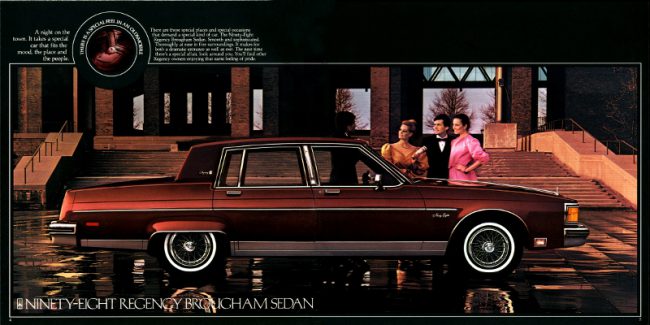
1984 Ninety-Eights were the last of the 1977-style original downsized models, albeit heavily restyled in 1980. As the Gm-Hatenscreed GmbH schtick goes, this was the uber Olds. Should have sold gangbusters, because the ’85 was such a bomb. Now, keep in mind I like all these cars. Love them, as a matter of fact. But the plain truth is that sales were slowly but surely going down. From the pretzel logic a certain website projects on a regular basis, ’84 sales should have logically been gangbusters, and have tanked in ’85. But lo! Per my copy of Setting the Pace: Oldsmobile’s First 100 Years, the plain truth is clear as glass. 1984 production amounted to 7,855 Regency coupes, 26,919 Regency sedans, and 42,059 Regency Brougham sedans. Not bad for a top of the line car, certainly, but things would rapidly be ticking upwards.
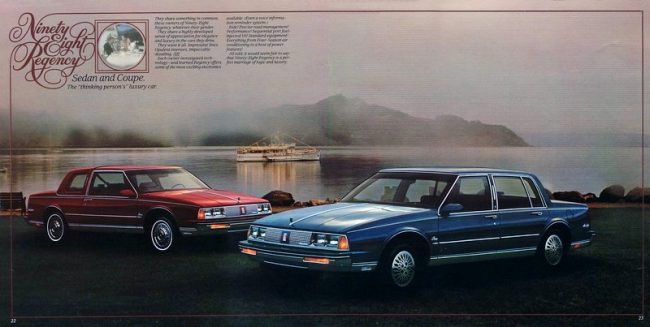
1985 saw 4,737 Regency coupes, 43,696 Regency sedans, 9,703 Regency Brougham coupes and 111,299, the crowd favorite, Regency Brougham sedans!
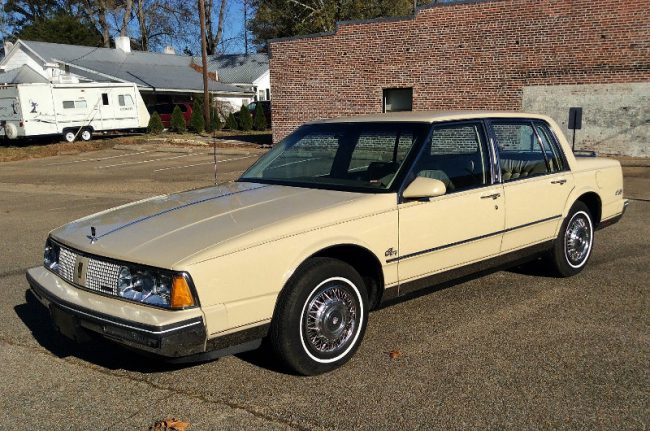
For model year ’86, with no benefit of an extra-long model year, production was 803 Regency coupes, 23,717 Regency sedans, 5,007 Regency Brougham coupes and 95,045 Regency Brougham sedans. Yep, not bad. So, despite the attempts of some, for whatever reason, to bash these cars, they sold. They were fresh and modern. And despite the reduced size, they still had a lot of the great GM luxocruiser feel.
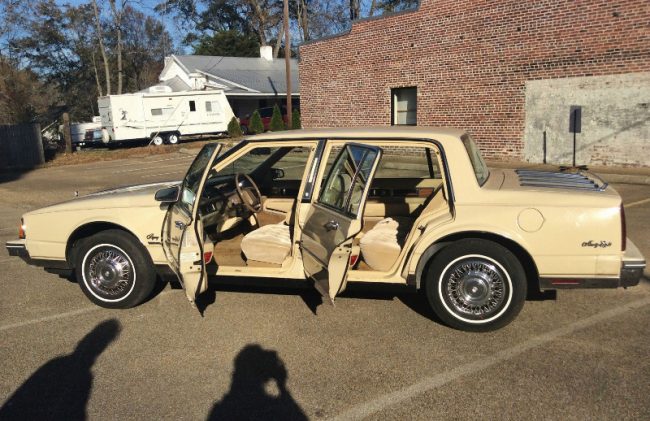
I can vouch for this firsthand. My Aunt Candy had the Buick equivalent, a silver-blue metallic 1986 Electra Park Avenue sedan. With navy vinyl roof and matching navy velour floating-pillow seating, it was a plush cruiser.

With its 3800 V6, it had plenty of power, thanks to the lower curb weight and dimensions. I drove that Park Avenue several times in the late 1990s, and it was a pleasure to drive. It may have had a much reduced footprint compared to the 1980-84 models, but the room inside was impressive.

At the time, I was driving a 1991 Volvo 940SE Turbo. It was my dad’s old company car, and a plush Scandihoovian ride. The Buick actually reminded me of the Volvo, due to the room, remarkable glass area, and nimble handling. Aunt Candy’s Park Avenue was almost like a Broughamified Volvo 740 or 940.
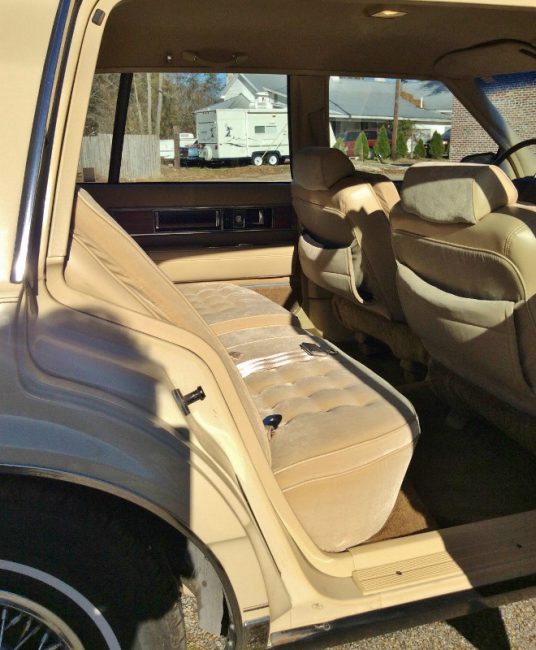
That 3800 V6 was smooth, and always ready to step up to the plate. Although I never drove it in the snow, I have heard tell of remarkable traction on these C-bodies by others who drove them in all kinds of inclement weather.
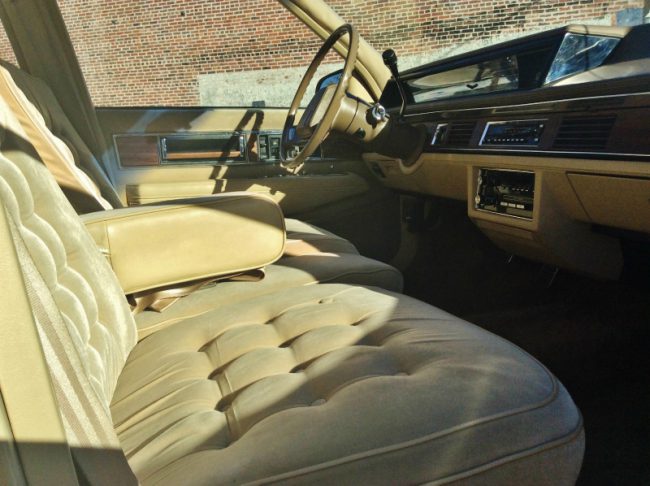
Although I liked the smooth, clean looks of the 1985-90 Buick Electras, I kind of had a preference for the Ninety-Eight. They just seemed a little more traditional, with a little more chrome, poofier seats and more woodgrain trim bits.
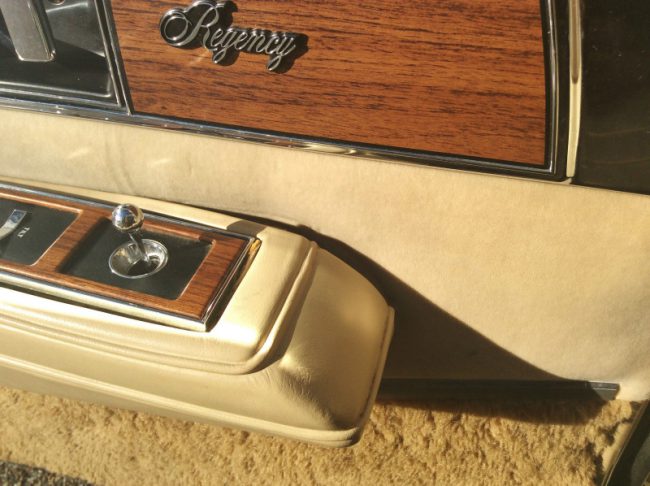
As a kid in my Midwestern city, I recall seeing many of these cars. Heck, two of our neighbors had one. Phil and Luray Kendall, on the other side of our next-door neighbors, the Ohlweilers, traded their triple navy blue 1984 Regency Brougham for a gunmetal gray 1988-89 Ninety-Eight Regency Brougham with dove gray interior.
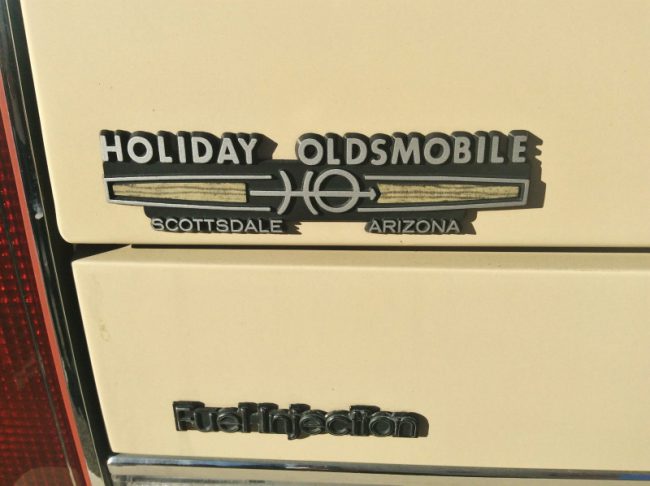
And our other neighbor, caddy corner from our house, the Presslys, also had a 1989-90 Ninety-Eight, also in gunmetal gray. They were a popular choice. Plush, comfortable, reliable. But not as ostentatious as a Park Avenue, Sedan de Ville or FWD Fleetwood.
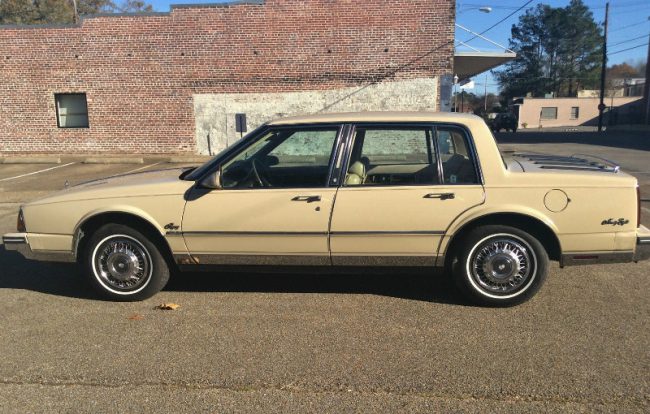
Our featured car today, a 1986 Ninety-Eight Regency sedan, was spotted by yours truly back in July 2016 on the electronic bay.
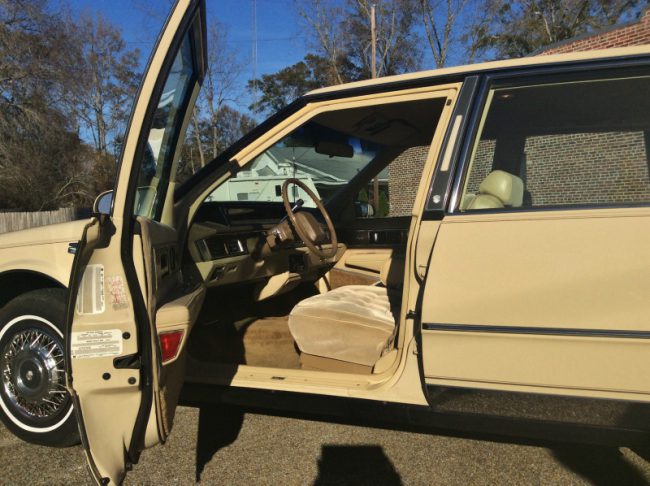
I rather liked the tan on tan color combo (Light Driftwood, according to the 1986 Oldsmobile brochure) and the overall excellent condition of this particular car. As a standard Ninety-Eight Regency, its interior, although plenty plush, is not quite as Broughamtastic as the Regency Brougham sedan, which outsold it four to one.
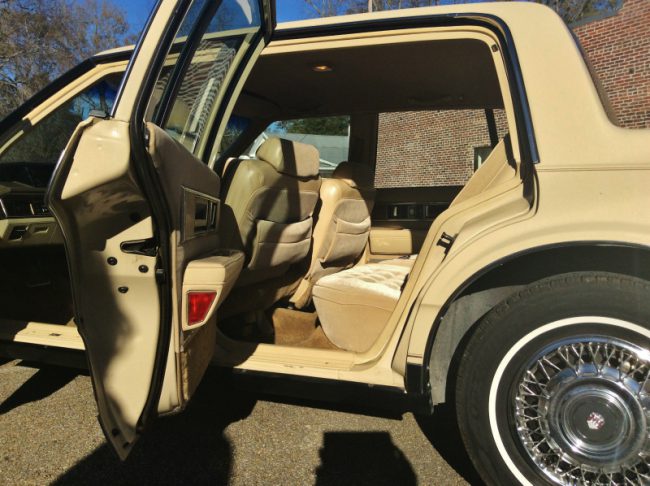
Although the 1985-90 Ninety-Eights are similar in appearance, it is pretty simple to tell what year you’re dealing with. The coupes were only available 1985-87. 1985-86 have quad sealed-beam headlamps, but the ’86 has a color-keyed center section in the grille; ’85s are all chrome. 1987s gained composite headlamps and a more streamlined grille, and ’88 was much the same. 1989 had another new grille, and the badging went from cursive to a more straightforward font.
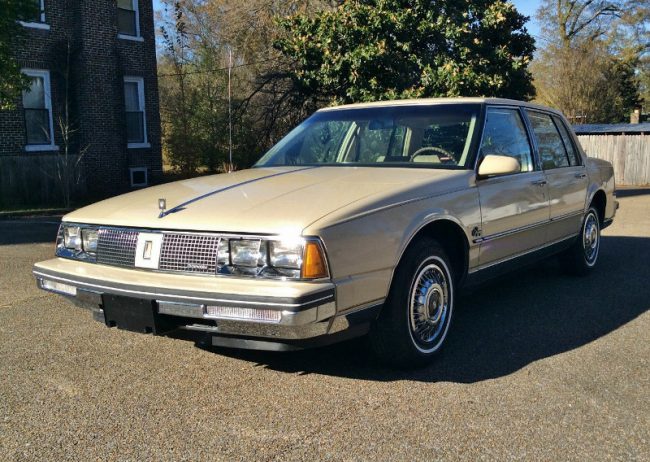
While it is true that more differentiation in appearance between the Olds, Buick and Cadillac versions would have helped, the plain truth is these cars sold. While RWD is almost a novelty in 2018-19, back in 1985-86 front wheel drive on big cars was new and interesting, especially in the Midwest, where winter-weather traction was very interesting to buyers.
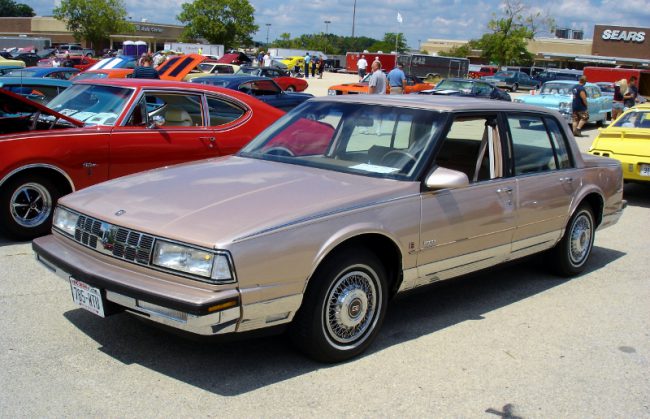
Even in 1990, the final year for this body style, 17,914 Regencys, 38,915 Regency Broughams, and 5,566 Touring Sedans were built. Not bad for a car that had not drastically changed since its early 1984 introduction as an ’85. But as is the case with many online sources, certain folks of a certain temperament don’t let the facts get in the way of their windmill-tilting angst. Until next time, ladies and germs, keep calm and Brougham on!
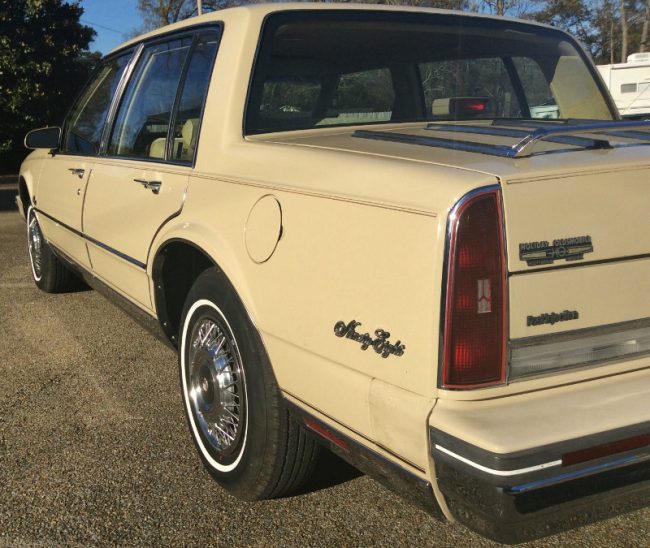







16 Comments
Thank you Tom for finally giving this car the credit it was due. What a design challenge to GM to design a smaller big car that was undeniably modern but still gave the traditional customer what they were expecting. If you think about it, perhaps the most challenging of design briefs. The 3800 V6 deserves special mention in this as Ford, Chrysler and eventually even Acura and Audi copied the 90 degree V6 but none could match the combination of low end torque, durability, and economy of operation of the original.
This staying true to the customer through different times is something Honda could have learned. The Accord going from a Japanese Scirrocco to an American Delta 88 while editing out the low end torque and suspension travel. Gee, maybe they were trying to stay true to their customers, just no doing as good a job. Luckily for them, their buyers don’t comparison shop.
Ford as well when their equivalent chose to ape Audi. Imagine how it would have bombed if they had a 5 cylinder to put in it. Notice also how limited and flimsy it proved when they tried to do a V8 for Lincoln or a fwd minivan off it. Understandable, when it was being designed no one would have figured having to cope with higher power and weights. The light but substantial GMs took such changes in stride.
Think also of Chrysler fwd New Yorkers. In their case, there was the boldness to put the old styling cues in place. However while waiting for their copy of the 3.8, a loud, lag filled turbo four is sudstituted. Everyone does this now, but only Saab back then. Being just too directly a K, neither the ride nor the handling measured up
Well said, John. It took Ma Mopar until 1988 to “fix” the FWD New Yorker (and introduce the similar Dodge Dynasty).
Well there you go Tom, another great write-up! And the tan Regency has a special place in my heart because first of all it is the same color as my Grandma’s ’87 Fleetwood d’Elegance and second her “boyfriend” back then had an ’87 base Regency in gunmetal gray. If you mix and match you have their two cars! He and I always discussed how we thought his car looked nicer in gray and her car looked nicer in beige. To see this car written up is so ironic, and I love it.
Now as far as the ignorance on other (ahem) websites it makes me sick as to what you read about 1980’s GM and these cars. Um, were these people not on the streets in the mid-eighties? THESE CARS WERE EVERYWHERE FOR CRYING OUT LOUD! DUH!! Granted the E-bodies (Eldo, Toro, Riv) may have been too much of a shock for some hence the lowered sales figures. And they were still selling extremely well in 1985 too. But I think large rear wheel drivers (as much as I love them like you do) were now looking big, dated and simply old. These downsized luxury models (and their H-body brethren) looked fresh, were a huge improvement in efficiency and still gave a beautiful ride. They also were much easier for folks to handle and they had enough panache for others to know they were luxury cars. True to GM fashion a grill or taillight may have differentiated the brands, but heck how many people confused an ’81 Regency or Park Avenue for a Caddy back then? A LOT. So this nonsense of these cars failing because of GM’s stupidity is exactly the opposite. These cars were a SUCCESS because of GM’s brilliance. GM may have had many a blunder, but these cars certainly were not one of them.
And lastly, may I add how incredibly reliable these cars were? The bullet proof 3.8 made you forget about V-8’s anymore. They returned great gas mileage in comparison to the old rear drivers and were downright FAST. I can’t tell you how many times I drove one of these cars and was amazed at the power it had. And every time I got in one I was shocked at the room it had.
Sorry Charlie, you’ll never convince me that these cars didn’t sell and were a flop. On the contrary I might add!
They were comfortable, middle-class cars.
I love the colors. Dodge may try its best to tease people in with a special color now and again, but we’re still mostly stuck in black/silver/white and then exactly one variant of blue or red.
Car thieves LOVED these with the red velvet seats.
Yes, car thieves really did love them. My neighbor had a red Pontiac C-body of this era and it was stolen twice. Finally she gave up, sold her house and moved into a gated community. But sell her car? Absolutely not! She had her priorities, you know.
There are many GM loyalists on CC. Sadly though, people feel the need to be a loyalist to any corporation…it’s so silly.
I think time has been kind to these early transverse FWD GM full-size cars. The styling is kind of awkward, especially when attached with a lot of Brougham accessories, but the survivability of these things is impressive.
Unlike the 1977 B-bodies which was the bases-loaded home run, these cars were the home-run that no one really noticed. Better in every measurable way than the RWD B-bodies they supplanted, they picked up a sort of malaise from sharing so many styling cues with the less than well received N- and E-bodies that preceded them. I feel they became part of the background noise of the late 1980’s while still selling very well.
These things were everywhere, but like the air, were hardly noticed. I knew lots of folks with these cars one being my sister. She had a 1987 Pontiac Bonneville, purchased new, that she drove for ten years and about 300K miles. During that time, it gave her good service with no major incidents. Then, she gave it to one of my nephews who drove it some more, but I have no idea how long that was. These kinds of stories seem to follow these cars, but there doesn’t seem to be a lot of nostalgia for them like the 1977 B’s.
I can understand why these no longer created a sensation, which I think for some was already present in the 1977 generation. The shrinking, however sensible or even justified, was still a reduction in expectations. The future will be less expansive than the past. We will have to make do with less. Personally, I am impressed how well GM carried these off, but if belt tightening was now the rule, what would the next generation look like?
The E-cars came out after these as 1986 MY cars, the N-cars were pretty well received, both the the Somerset Regal and Calais sold well and the Grand Am was a sold hit. These C/H cars were hits, but as you said, a home run that no one notices, it could be because lots of people weren’t watching this game anymore. These did a good job at keeping lots of current customers, where they didn’t do as well was in bringing in folks that had defected away to imports back.
These were good snow cars even with all-season tires. With some studded snow tires on these cars, the only thing that stopped my friends in the 80s and 90s going through Cascade Mountain passes for skiing was deep snow in resort parking lots.
Good write-up Tom. I think the differing perspective on this partly is geographic, as these sold like gangbusters in middle-America and proved to be durable and pleasant to drive cars, but on the coasts they were considered “deplorable” for a few reasons that also have some legitimacy. First, GM had become pathetic in differentiating the styling of their different models and brands – Lincoln did commercials making fun of the styling similarity of these Olds, Buick, and Caddy C-Bodies, and truth be told they also looked a lot like A bodies, N bodies, and E bodies of the same era. Second, while the 3.8 V-6 was an excellent motor, it was decidedly “old-tech” and seemed to be the only motor GM made as they put it in just about everything with very little differentiation at this time – no turbo or supercharged versions or otherwise high output versions were generally offered on the GM FWD cars until the 1990s. Third, GM was losing a lot of credibility from all the awful cars they made in the 1970s and 80s, which negatively impacted the reputation of the GM full-size models that generally were well done cars during the era (Cadillac V8-6-4, 4.1, and Olds diesel excepted). There are real reasons that GM was badly bleeding market share when these came out, and as you correctly point out it wasn’t the fault of these FWD C-Bodies, but they no doubt suffered from some collateral damage.
Kudos to Stingray for admitting the coastal areas were just totally ignoring these cars except to sneer while the heartland took them to heart. The next step is to admit that maybe the heartland had it right sometimes and it might be possible that your beloved coastal dwellers got it wrong in a few cases. Buying 250,000 horrid 1986 Hyundai Excels in the first year assuming they would be great because they had an Asian name? Ignoring not just bad American cars but all American cars for a whole generation. I know a journey requires many steps so I will leave it to congratulate you again on your first one. Good going Stingray
John – thanks for the compliment, and I fully agree the coastal areas often make bad vehicle purchasing decisions, perhaps because they also make such bad voting decisions in always electing anti-car Leftists who want to jack up fuel and other vehicle taxes and stop building roads, which makes owning a larger, more comfortable car less attractive and affordable. It of course also helps that the Left coast doesn’t face snowy conditions and road salt, so they could buy the Asian vehicles with zero rust-proofing and not face dire consequences after 2-3 years as was the case in the midwest.
I drove a 1990 Grand Prix as a high-schooler in Northern IL. A lot of my contemporaries had various hand-me-down and second-hand GM products. Those Mid-80’s through Mid-90’s front drivers were great reliable winter cars.